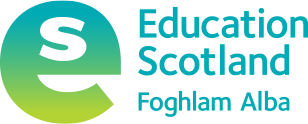How can we create a Language and Communication Supportive Environment in Early Learning and Childcare settings?: Setting targets and reviewing progress
The completion of a self-evaluation provides information about strengths and identifies action needed to build on strengths and address concerns.
The quality of interactions provides a foundation for all aspects of SLC support. Concerns about any aspect of interactions should therefore be prioritised ahead of experiences and spaces.
Staff support and development
Any change in the language and communication environment will require the active involvement of each member of staff in the setting. Agreed areas for improvement should be widely shared, with opportunities to regularly revisit these areas of the audit and to celebrate improvement.
Including supports for language and communication in the setting’s improvement plan will create opportunities to review and celebrate progress. In some areas this plan might be linked to local authority and health board led multi-agency planning for improvement.
All staff will need working knowledge of child language development and milestones and how to engage babies and children in responsive and language supportive interactions within play, structured activities and everyday routines. The knowledge and skills around this are described in a SLC Knowledge and Skills matrix available from the National Early Language and Communication Project practice sharing site.
Professional learning opportunities can build knowledge and confidence. Training might be provided by more experienced staff within a setting or through a connection with local speech and language therapy services or early years education specialists. The Scottish Social Services Council (SSSC) online Learning Zone hosts a range of supportive resources including e-learning modules.
Agencies such as Speech and Language Therapy might contribute to training, self-evaluation or improvement depending on local services and agreements in place.
Knowing what to do differently is important, as is understanding why this change matters. It is easier to make changes when we see others modelling these behaviours. It is also helpful to have protected time to think about what we are already doing well, and what else we can try, with opportunities for peer support or informal coaching. Staff should have regular opportunities to talk about how they are working together to create a language and communication supportive environment.
A simple way to support self-reflection on practice is to use video. This video reflection tool can be used to support staff to create and individually reflect on a very short video of their own interaction with a baby, child or children in the setting.
Areas may wish to consider a local accreditation process as a way of celebrating success and to keep language and communication environment on the improvement agenda.
Senior staff in settings should talk to all new and temporary staff about the language and communication supportive environment and should provide training and support to help them put ideas into practice.
Reflective questions to support local planning can be found in Appendix 3.
